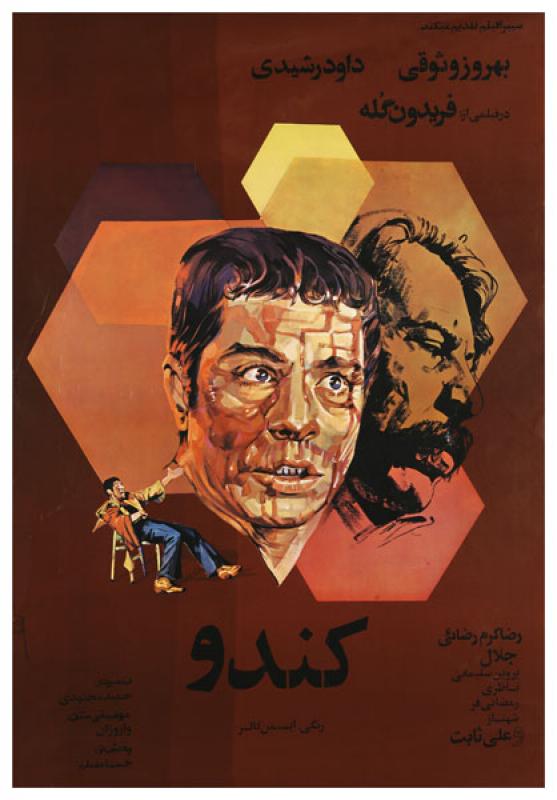Introduction:
In the annals of cinema, certain films stand as timeless markers, encapsulating the essence of a particular era while resonating with audiences across generations. One such cinematic gem is “Beehive,” a 1975 film that not only serves as a nostalgic trip down memory lane but also delves into the social fabric of its time. This comprehensive review aims to explore the multifaceted layers of “Beehive,” from its evocative soundtrack to its nuanced storytelling, and the cultural impact that continues to reverberate.
Section 1: Setting the Stage – The 1970s Cultural Landscape
1.1 Backdrop of the 1970s: A Decade of Change
“Beehive” unfolds against the backdrop of the 1970s, a decade marked by social upheaval, cultural shifts, and the throbbing beats of transformative music. As the world navigated issues like civil rights, feminism, and the Vietnam War, the film captures the zeitgeist of an era in which societal norms were being challenged, and a new wave of consciousness was emerging.
1.2 The Beehive Hairstyle: Symbolism and Identity
The film’s title, “Beehive,” pays homage to the iconic beehive hairstyle that became synonymous with the 1960s and 1970s. Beyond a mere fashion statement, the beehive carries layers of symbolism, representing rebellion, individualism, and a break from the traditional roles assigned to women. The hairstyle becomes a metaphorical hive buzzing with the energy of change.
Section 2: Soundtrack as a Time Capsule
2.1 Musical Tapestry: A Soundtrack for the Ages
One of the standout features of “Beehive” is its meticulously curated soundtrack that weaves through the narrative like a melodic time capsule. From the psychedelic tunes of the late 60s to the anthems of women’s liberation, the soundtrack encapsulates the diverse musical landscape of the era. Iconic tracks from artists like Janis Joplin, Aretha Franklin, and The Supremes infuse each scene with an auditory resonance that transcends time.
2.2 Cultural Commentary Through Song Choices
The choice of songs in “Beehive” goes beyond mere nostalgia; it serves as a poignant commentary on the socio-political landscape. Each track is strategically placed, reflecting the characters’ emotions and mirroring the societal shifts. The soundtrack becomes a character in itself, guiding the audience through the evolving moods and perspectives of the protagonists.
Section 3: The Ensemble Cast and Performances
3.1 Diverse Narratives, Diverse Cast
“Beehive” boasts an ensemble cast that mirrors the diversity of experiences during the 1970s. The film intertwines multiple narrative threads, each following a different character’s journey. From the aspiring musician navigating the male-dominated industry to the activist challenging societal norms, the characters in “Beehive” embody the various facets of the era’s cultural tapestry.
3.2 Notable Performances and Character Dynamics
The performances in “Beehive” are nothing short of stellar. The cast, led by a cadre of talented actors, breathes life into characters grappling with identity, love, and societal expectations. The chemistry between characters is palpable, and the nuanced portrayals add depth to the film’s exploration of personal and collective struggles.
Section 4: A Mosaic of Women’s Stories
4.1 Feminism and Identity
At its core, “Beehive” is a celebration of women’s stories and a nod to the feminist movement that gained momentum during the 1970s. The film skillfully navigates the complexities of female identity, portraying characters who defy conventional norms and challenge the status quo. The beehive hairstyle becomes a symbol of these women’s determination to shape their destinies.
4.2 Relationships and Empowerment
Interwoven with themes of feminism are narratives exploring relationships and empowerment. The characters in “Beehive” grapple with love, heartbreak, and self-discovery. The film presents a mosaic of romantic entanglements, friendships, and familial bonds, all contributing to the characters’ growth and empowerment.
Section 5: Cinematic Craftsmanship
5.1 Visual Aesthetics and Period Detailing
“Beehive” is a visual feast, capturing the aesthetic nuances of the 1970s with meticulous detail. From the fashion choices to the vibrant color palette, the film immerses viewers in the era’s visual language. The cinematography skillfully oscillates between intimate character moments and grand scenes that capture the larger societal panorama.
5.2 Narrative Structure and Pacing
The film’s narrative structure is akin to a musical crescendo, building momentum as it progresses. The pacing allows for a seamless transition between character arcs, ensuring that each story receives its due focus. The cyclical nature of the narrative, mirroring the ebb and flow of societal changes, adds a layer of complexity to the storytelling.
Section 6: Legacy and Cultural Impact
6.1 Enduring Appeal and Cultural Resonance
Decades after its release, “Beehive” continues to hold a special place in the hearts of audiences. Its enduring appeal lies in its ability to capture the spirit of an era while addressing timeless themes of identity, love, and empowerment. The film’s cultural resonance extends beyond its initial reception, finding new audiences who appreciate its thematic depth and historical significance.
6.2 Influence on Contemporary Filmmaking
The influence of “Beehive” on contemporary filmmaking is evident in works that draw inspiration from its narrative approach and thematic exploration. The film serves as a touchstone for filmmakers navigating stories of societal change, female empowerment, and the intricate dance between individual journeys and collective experiences.
Section 7: Conclusion
In conclusion, “Beehive” stands as a testament to the power of cinema to encapsulate the spirit of an era. Through its evocative soundtrack, rich characterizations, and exploration of societal shifts, the film immerses audiences in the tumultuous yet vibrant landscape of the 1970s. As a cinematic journey, “Beehive” not only pays homage to a bygone era but also serves as a mirror reflecting the ongoing evolution of societal norms and individual aspirations. With its timeless themes and memorable characters, “Beehive” continues to resonate, inviting new generations to experience the heady mix of nostalgia and social commentary that defines this cinematic masterpiece.
